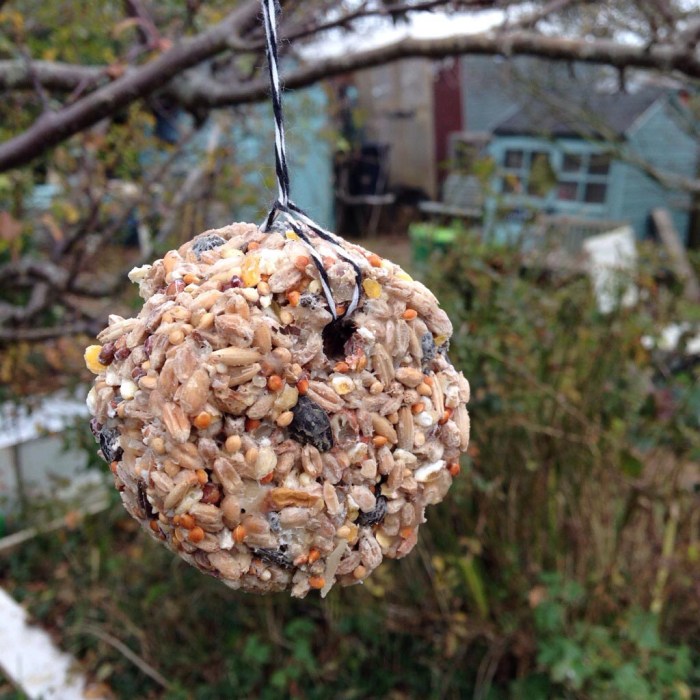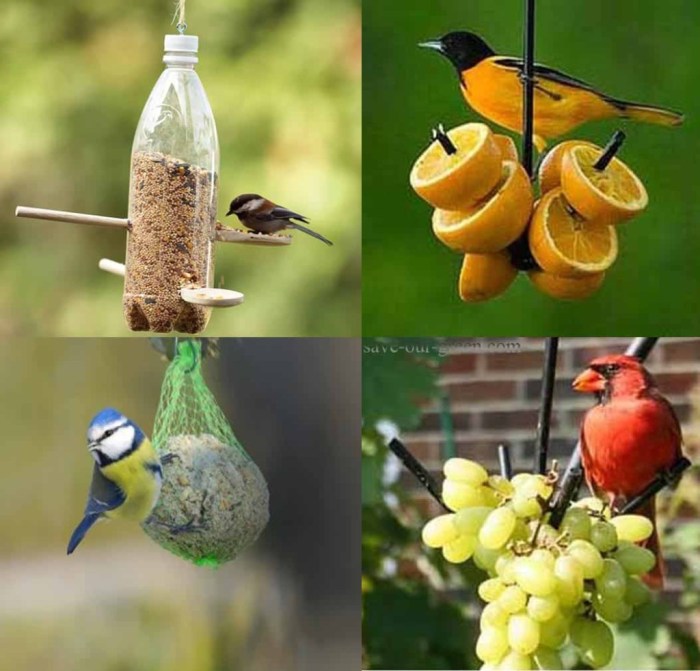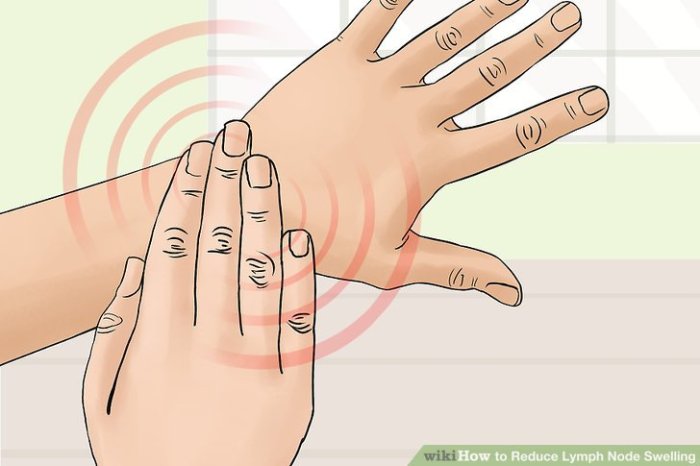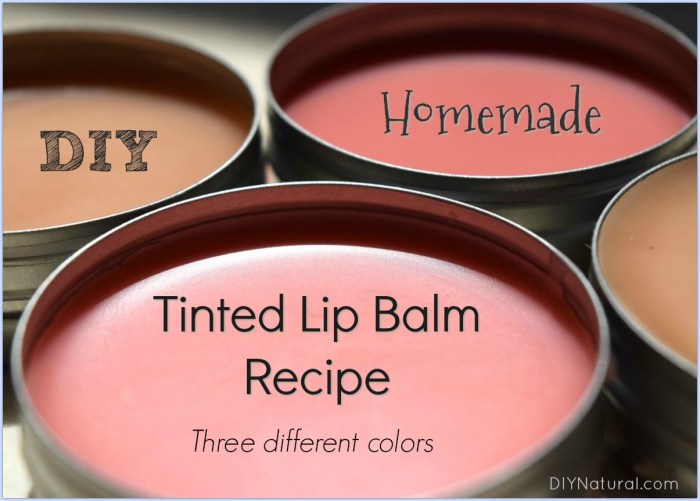DIY bird food takes center stage, offering a rewarding and cost-effective way to provide nutritious meals for your feathered friends. This comprehensive guide explores the benefits, ingredients, recipes, and tips for creating homemade bird food that caters to various species and their unique needs.
Whether you’re a seasoned bird enthusiast or a novice backyard feeder, this guide provides the knowledge and inspiration to craft delicious and healthy bird food that will attract a diverse array of avian visitors. From basic ingredients to seasonal variations, you’ll discover the joy of creating personalized bird food that nourishes and delights.
Benefits of DIY Bird Food
Making your own bird food can be a rewarding experience, offering several advantages over commercially available options. You gain greater control over the ingredients, potentially providing a more nutritious diet for your feathered friends.
Cost Savings
One of the most significant benefits of making your own bird food is the potential for cost savings. Pre-made bird food can be expensive, especially if you have a large number of birds visiting your feeders. By making your own food, you can often purchase ingredients in bulk, reducing the overall cost per serving.
Control Over Ingredients
Making your own bird food gives you complete control over the ingredients. This is especially beneficial if you want to avoid certain additives or preservatives that may be present in commercially available bird food. You can also tailor the ingredients to the specific needs of the birds in your area.
More Nutritious Options
Homemade bird food can be more nutritious than commercially available options. By using high-quality ingredients and avoiding unnecessary additives, you can create a food that is packed with the nutrients your birds need.
Examples of Birds that Benefit from Homemade Food
Many bird species can benefit from homemade food, especially those that are insectivores or have specific dietary needs. For example, hummingbirds can benefit from a homemade nectar solution made with sugar and water. Seed-eating birds, such as cardinals and finches, can benefit from a mixture of seeds, nuts, and fruits.
Basic Ingredients for DIY Bird Food

Creating your own bird food is a rewarding experience, allowing you to customize the blend to attract specific species and provide them with the nutrients they need. Understanding the core ingredients and their nutritional value is crucial for crafting a healthy and enticing bird food mix.
Seeds
Seeds form the foundation of most bird food recipes, offering a diverse range of nutritional benefits.
- Sunflower seeds: High in fat and protein, sunflower seeds are a favorite among many birds, particularly cardinals, chickadees, and finches. They provide essential fatty acids, vitamins, and minerals.
- Nyjer seed: This tiny black seed is a staple for finches, offering a rich source of energy and essential fatty acids. Nyjer feeders are often used to attract goldfinches, house finches, and purple finches.
- Safflower seeds: Safflower seeds are a good alternative to sunflower seeds, offering a slightly lower fat content and appealing to a wider variety of birds, including cardinals, chickadees, and grosbeaks.
- Milo: This grain is a less expensive alternative to other seeds, offering a good source of carbohydrates and protein. It is often included in mixes for larger birds like doves and quail.
Nuts
Nuts provide additional protein, healthy fats, and valuable minerals.
- Peanuts: Peanuts are a popular choice for woodpeckers, jays, and nuthatches, offering a rich source of protein and fat. Choose unsalted, in-shell peanuts for the best nutritional value and to prevent potential salt toxicity.
- Almonds: Almonds offer a good source of protein, fiber, and healthy fats, making them a valuable addition to bird food mixes for a variety of species. They are particularly appealing to jays, squirrels, and woodpeckers.
- Walnuts: Walnuts provide a good source of omega-3 fatty acids, protein, and fiber, making them a nutritious addition for birds that enjoy nuts.
Grains
Grains provide carbohydrates, fiber, and essential nutrients, making them a valuable component of bird food.
- Oats: Oats are a good source of fiber and protein, making them a healthy option for a variety of birds. They are particularly appealing to sparrows, doves, and quail.
- Corn: Corn is a high-energy grain that is a favorite of many birds, particularly doves, quail, and cardinals. It is rich in carbohydrates and provides a good source of protein and fiber.
- Wheat: Wheat is a versatile grain that can be included in bird food mixes for a variety of species. It is a good source of carbohydrates and fiber, but some birds may prefer other grains.
Dried Fruits
Dried fruits add sweetness and essential vitamins and minerals to bird food mixes.
- Cranberries: Cranberries are a good source of antioxidants and vitamins, making them a healthy treat for a variety of birds. They are particularly appealing to cardinals, chickadees, and grosbeaks.
- Raisins: Raisins are a good source of potassium and iron, making them a valuable addition to bird food mixes. They are particularly appealing to finches, sparrows, and doves.
- Apples: Dried apples offer a good source of fiber and vitamins, making them a healthy treat for birds that enjoy fruit.
DIY Bird Food Recipes
Creating your own bird food can be a fun and rewarding experience, allowing you to tailor the mixture to the specific needs of the birds in your area. By using readily available ingredients and following these simple recipes, you can provide a nutritious and delicious treat for your feathered friends.
Recipes for Different Bird Species
This section will explore several DIY bird food recipes designed to attract different bird species based on their dietary preferences.
| Recipe Name | Ingredients | Instructions | Target Bird Species |
|---|---|---|---|
| Basic Seed Mix |
|
|
|
| High-Energy Suet Mix |
|
|
|
| Hummingbird Nectar |
|
|
Hummingbirds |
| Fruit and Jelly Mix |
|
|
|
Feeding Tips for DIY Bird Food

Providing your feathered friends with homemade bird food is a rewarding experience, but it’s crucial to ensure the food remains fresh and safe for consumption. Proper storage and feeding methods play a significant role in maximizing the benefits of your DIY bird food.
Storing and Preserving Homemade Bird Food
Storing homemade bird food correctly is essential to prevent spoilage and maintain its nutritional value. Here are some helpful tips:
- Store in airtight containers: This prevents moisture, pests, and other contaminants from affecting the food.
- Refrigerate or freeze: Refrigerating or freezing homemade bird food can extend its shelf life. This is particularly important for recipes containing perishable ingredients like fruits or vegetables.
- Use within a reasonable timeframe: Even with proper storage, homemade bird food should be used within a few weeks, especially if it contains perishable ingredients. It’s best to check for signs of spoilage, such as mold, discoloration, or an off smell, before feeding it to birds.
Feeding Methods and Techniques, Diy bird food
There are several ways to feed your feathered friends homemade bird food. The best method depends on the type of birds you are attracting and your personal preference.
- Bird feeders: These are popular options for attracting a variety of birds. Choose feeders that are appropriate for the size and type of birds you are targeting. For example, tube feeders are suitable for small birds like finches, while platform feeders are ideal for larger birds like doves or cardinals.
- Bird platforms: These are open platforms that allow birds to feed freely. They are a good choice for larger birds or for feeding a variety of bird species.
- Scattering on the ground: This is a natural feeding method that attracts ground-feeding birds like sparrows, juncos, and doves. However, it can also attract unwanted pests like rodents, so be mindful of this.
Cleaning and Sanitation
Regular cleaning and sanitation of feeders are crucial to prevent the spread of diseases among birds. Here’s how to keep your feeders clean:
- Clean feeders regularly: Wash feeders with hot, soapy water at least once a week, or more frequently if needed. This removes any leftover food, droppings, or other debris that can harbor bacteria.
- Disinfect feeders: Use a mild bleach solution (1 part bleach to 10 parts water) to disinfect feeders. Rinse thoroughly with clean water after disinfecting.
- Avoid using harsh chemicals: Do not use strong cleaners or detergents on feeders, as these can be harmful to birds. Stick to mild, bird-safe solutions.
By embracing the DIY approach to bird food, you’ll not only provide your feathered companions with the best possible nourishment but also gain a deeper understanding of their dietary requirements and the importance of conservation. As you witness the delight and abundance your creations bring to your backyard, you’ll find yourself immersed in the fascinating world of birdwatching and the joy of nurturing wildlife.
DIY bird food is a fun and rewarding activity, especially during the colder months when birds need extra sustenance. You can get creative with different seed mixes and even try making your own feeders. If you’re looking for a fun couple’s costume idea, check out these couples Halloween costumes DIY projects. Once you’ve finished crafting your costumes, you can get back to making delicious bird food and watching the feathered friends enjoy your creations.



